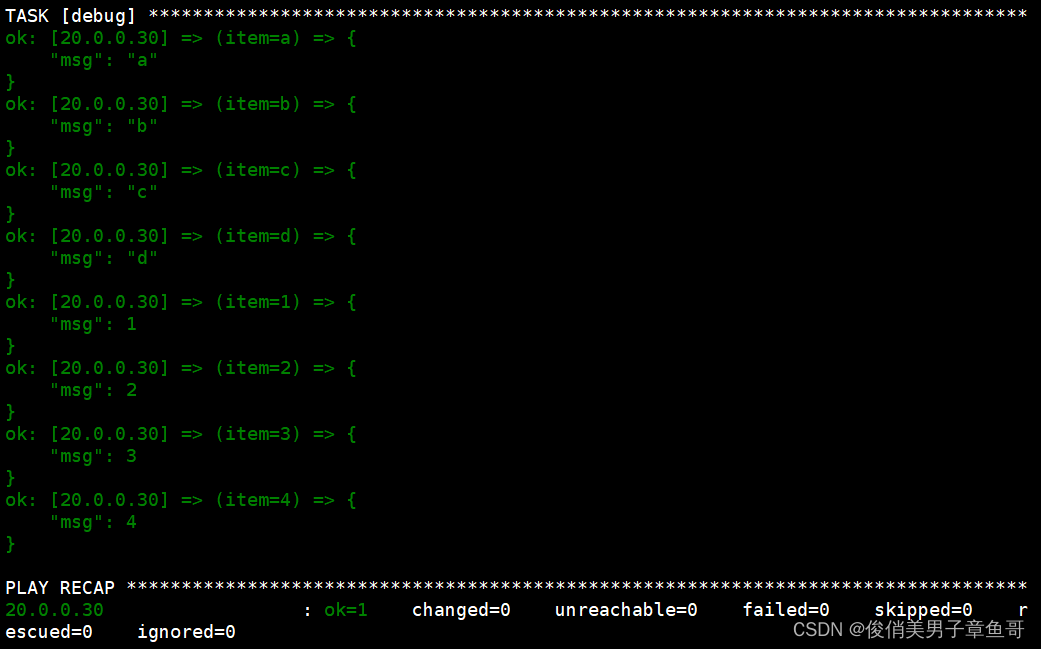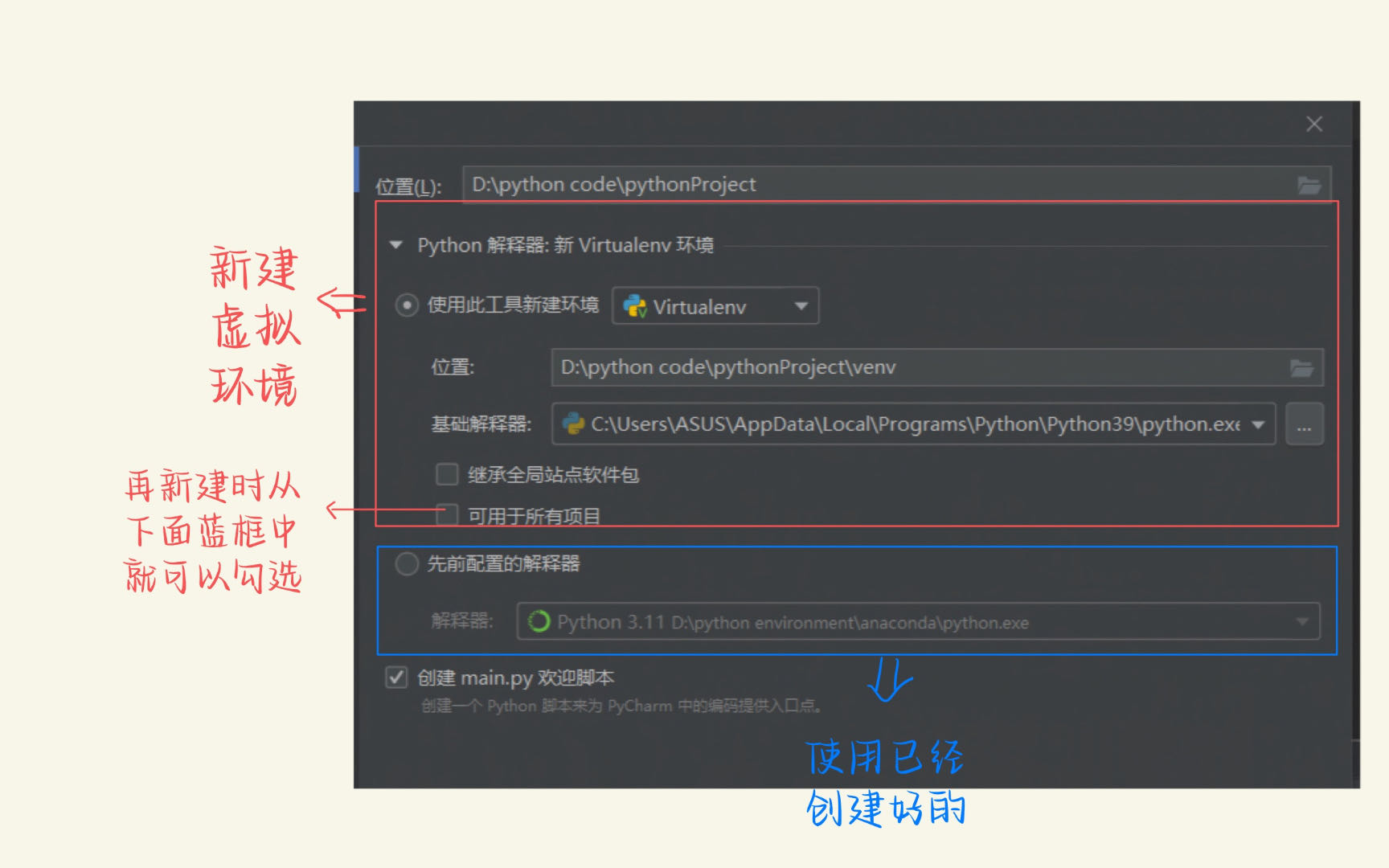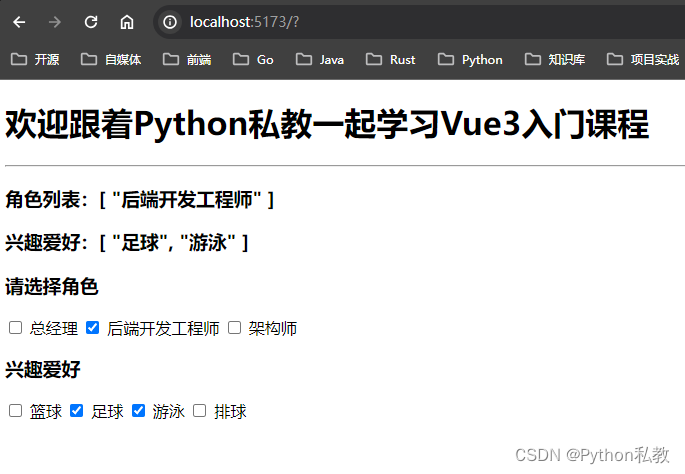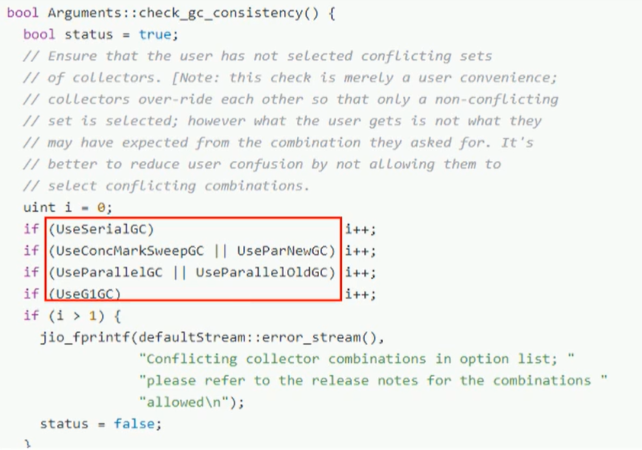playbook的组成部分
1、 tasks:任务
在目标主机上需要执行的操作。使用模块定义这些操作。每个任务都是一个模块的调用。
2、 variables:变量
用于存储和传递数据。类似于shell脚本中的变量。变量可以自定义。可以在playbook当中定义为全局变量,也可以外部传参。类似于shell脚本中的位置变量
3、 Templates:模板
用于生成配置文件。模板是包含占位符的文件。占位符由ansible在执行时转化为变量值。
4、 handlers:处理器
当需要有变更的时候,可以执行触发器。
5、 Roles:角色
类似于dockercompose。是一种组织和封装playbook的。允许把相关的任务、变量、模板和处理器组织成一个可复用的单元。
实例模板1:
vim test1.yml
#this is our first playbook
- name: first play
#相当于任务描述。一个name就是一个任务名。可以为空可以不写。
gather_facts: false
#是否收集主机的相关信息。如果不写默认收集
#false:表示不检查。可以加快playbook的执行速度
hosts: 20.0.0.20
#声明目标主机是谁。可以使用IP或者组名
remote_user: root
#在目标主机执行的用户
tasks:
#声明需要执行的任务。可以理解为大任务中的小任务
- name: ping test
ping:
- name: close selinux
command: '/sbin/setenforce 0'
ignore_errors: True
#如果出现错误则忽略
- name: close firewalld
service: name=firewalld state=stopped
- name: install httpd
yum: name=httpd
#state=latest:声明服务的版本。可以不加
- name: start httpd
service: enabled=true name=httpd state=started
- name: editon index.html
#修改httpd服务的默认的访问页面
shell: echo "this is httpd" > /var/www/html/index.html
notify: restart httpd
#notify:表示需要变更。交给handlers处理重启httpd服务
handlers:
- name: restart httpd
service: name=httpd state=restarted检查yml文件的语法是否正确
ansible-playbook test1.yml --syntax-check
#检查yml文件的语法是否正确检查有多少任务
ansible-playbook test.yaml --list-task检查有多少主机生效
ansible-playbook test1.yml --list-hosts
#检查生效的目标主机指定剧本
ansible-playbook test1.yml --start-at-task='install httpd'
#指定剧本从哪个任务开始执行切换用户:
#this is our first playbook
- name: first play
#相当于任务描述。一个name就是一个任务名。可以为空可以不写。
gather_facts: false
#是否收集主机的相关信息。如果不写默认收集
#false:表示不检查。可以加快playbook的执行速度
hosts: 20.0.0.20
#声明目标主机是谁。可以使用IP或者组名
remote_user: zyg
#在目标主机执行的用户
become:yes
become_user:root
#表示需要切换用户,切换用户的名称
tasks:
#声明需要执行的任务。可以理解为大任务中的小任务
- name: ping test
ping:
- name: close selinux
command: '/sbin/setenforce 0'
ignore_errors: True
#如果出现错误则忽略
- name: close firewalld
service: name=firewalld state=stopped
- name: install httpd
yum: name=httpd
#state=latest:声明服务的版本。可以不加
- name: start httpd
service: enabled=true name=httpd state=started
- name: editon index.html
#修改httpd服务的默认的访问页面
shell: echo "this is httpd" > /var/www/html/index.html
notify: restart httpd
#notify:表示需要变更。交给handlers处理重启httpd服务
handlers:
- name: restart httpd
service: name=httpd state=restarted
become:yes
become_user:root
vim /etc/ansible/ansible.cfg
取消17行的注释
ansible-play test1.yml -K
#表示输入密码
#-K:内部声明更改用户,使用-K指定用户操作
ansible-playbook test1.yml -u root -k
#如果没有声明更改用户,可以在外部指定用户
#-u:指定用户
#-k:手动输入密码实例模板2:
声明和引用变量,以及外部传参变量
#this is second playbook!
#声明和引用变量,以及外部传参变量
- hosts: 20.0.0.20
remote_user: root
vars:
groupname: zyg
username: hmbb
tasks:
- name: create group
group:
name: "{{ groupname }}"
#引用前面设定好的groupname
system: yes
gid: 111
- name: create user
user:
name: "{{ username }}"
uid: 1011
group: "{{ groupname }}"
shell: /sbin/nologin
- name: copy file
copy:
content: "{{ hostvars[inventory_hostname]['ansible_default_ipv4']['adress']}}"
dest: /opt/bqb.txt字典方式:
vars:
groupname: zyg
username: hmbb使用的是key-value的方式
使用符号-开头表示这是一个列表
表示包含所有主机变量的字典
"{{ hostvars[inventory_hostname]['ansible_default_ipv4']['adress'] }}"
#表示包含所有主机变量的字典
#inventory_hostname:目标主机的主机名
#['ansible_default_ipv4']['adress']:获取目标主机名
#表示获取目标主机的IP地址复制到目标文件里外部传参
ansible-playbook test2.yml -e 'username=yst groupname=ymr'
#外部传参playbook的条件判断
when:比较常见的应用场景,实现满足条件即执行,不满足条件即跳过的任务
#this is when test
- hosts: all
#可以用主机的IP地址也可以使用组名
remote_user: root
tasks:
- name: test when
debug:
msg: '位置判断'
#相当于shell脚本中的echo。满足条件就会打印。不满足则不打印
#msg:表示输出的内容
when: ansible_default_ipv4.address == '20.0.0.30'
playbook当中的循环
ansible有多种循环格式。with_items:循环遍历
- hosts: 20.0.0.30
remote_user: root
gather_facts: false
tasks:
- debug:
msg: "{{ item }}"
with_items:
- [a,b,c,d]
- [1,2,3,4]
#声明变量是item。playbook的内置变量,with_items,会把itme的值。遍历列表当中的a,b,c,d.
#虽然声明的列表是两个,但是with_items还是把两个列表当成整体进行遍历。
分组打印列表
- hosts: 20.0.0.30
remote_user: root
gather_facts: false
tasks:
- debug:
msg: "{{ item }}"
with_list:
- [a,b,c,d]
- [1,2,3,4]
#with_list:分组打印
遍历循环在主机上创建目录
- hosts: 20.0.0.30
remote_user: root
gather_facts: false
tasks:
- name: create file
file:
path: "{{ item }}"
state: touch
with_items:
- [/opt/a,/opt/b,/opt/c,/opt/d]
- [/opt/1,/opt/2,/opt/3,/opt/4]
方法2:
- hosts: 20.0.0.30
remote_user: root
gather_facts: false
tasks:
- name: create file
file:
path: "{{ item }}"
state: touch
with_list:
- /opt/a
- /opt/b
- /opt/c
- /opt/d
- /opt/1
- /opt/2
- /opt/3
- /opt/4同一列的数据组合输出
- hosts: 20.0.0.30
remote_user: root
gather_facts: false
tasks:
- debug:
msg: "{{ item }}"
with_together:
- [a,b,c,d]
- [1,2,3,4]
#with_together:组循环,列表当中的值一一对应,打印出来。
#适用于组合搭配根据列表数据循环匹配
- hosts: 20.0.0.30
remote_user: root
gather_facts: false
tasks:
- debug:
msg: "{{ item }}"
with_nested:
- [a,b,c,d]
- [1,2,3,4]
#第一层:列表里面的元素定义了循环的次数
#第二层:相当于内循环四种循环方式:
with_items
#最常用
with_list
#列表分组循环
with_together
#列表对应的列,数据结合的方式循环
with_nested
#相当于双重循环,第一层定义了循环次数,第二层表示第一层的每个元素会循环几次
#这些都是单循环Tenplates模块
jinja模板架构,通过模板可以实现向模块文件传参(python转义),把占位符参数传到配置文件中去。
jinja的作用:生成一个目标文本文件,传递变量到需要配置文件当中。
实验架构
vim /etc/httpd/conf/httpd.conf
#配置占位符。可以理解为声明的变量
vim /etc/ansible/hosts
#配置主机的占位符名称和j2文件中的占位符一致。可以理解为定义参数:占位符的参数声明好
vim /opt/httpd.yml
#在playbook当中,使用template模块来把参数传给目标主机的配置文件。
- hosts: all
remote_user: root
vars:
- package: httpd
- service: httpd
tasks:
- name: install httpd
yum: name={{package}}
- name: install configure file
template: src=/opt/httpd.conf.j2 dest=/etc/httpd/conf
#使用template的模板
notify:
- restart httpd
- name: create root_dir
file:
path: /etc/httpd/htdocs
state: directory
- name: start httpd
service: name={{service}} enabled=true state=started
handlers:
- name: restart httpd
service: name={{service}} starte=restarted
#通过占位符,和python的转义复制到目标文件中1、 先配置占位符。可以理解为声明的变量 2、 再配置主机的占位符名称和j2文件中的占位符一致。可以理解为定义参数:占位符的参数声明好 3、 最后在playbook当中,使用template模块来把参数传给目标主机的配置文件。
外部传参远程修改nginx的配置文件
- hosts: all
remote_user: root
vars:
- package: nginx
- service: nginx
tasks:
- name: install nginx
yum: name={{package}}
- name: install configure file
template: src=/opt/nginx.conf.j2 dest=/etc/nginx/nginx.conf
notify:
- restart nginx
- name: create root_dir
file:
path: /opt/nginx/html/
state: directory
- name: start nginx
service: name={{service}} enabled=true state=started
handlers:
- name: restart nginx
service: name={{service}} state=restartedtags模块
标签模块:可以在playbook当中为任务设定标签。我们在运行playbook时可以通过指定任务标签,来实现只允许设定的标签任务。
-name
tags:
debug:
--tags debug
--start-at-task='wdf'任务标签的种类
always:不管你是否制定了允许标签,任务都会执行。
never:不管是否运行了指定标签,该任务也不会执行。
debug:调试任务
setup:手机主机信息
还可以自定义标签
per_tasks:指定标签之前的任务
post_tasks:运行指定标签之后的任务
- hosts: all
remote_user: root
tasks:
- name: tag debug
debug:
msg: "this is demo1"
tags:
- debug
#声明项目的名称
- name: tag setup
setup:
tags:
- setup
- name: tag always
debug:
msg: "run"
tags:
- always
- name: tag never
debug:
msg: "never run"
tags:
- never
ansible-playbook demo1.yml --tags="debug"
#运行指定标签debug
#如果指定标签never也可以运行
#只有always是一直在运行Roles模块
角色模块:每个主题就是一个角色
在ansible当中,层次化,结构化的组织playbook。使用了Rolse(角色)。可以更具层次结构,自动装载变量文件,task以及handlers等等
roles:分辨把变量,文件,任务,模块以及处理器,放在单独的目录当中,使用rolse模块来一键调用这些文件。类似于Dockercompose
roles的结构图:
----web-----总目录,角色
子目录:
files:存放copy和script模块调用的文件
templates:存放j2的模板文件
tasks:包含任务的目录---子目录下---main.yml。定义角色运行的任务
handlers:包含处理器的目录--子目录下--main.yml。
vars:存放角色需要引用变量的目录--子目录下--main.yml。
defaults:包含默认变量的目录---子目录下---main.yml。
meta:包含元信息的目录---子目录下--main.yml。
site.yml:统筹调用所有的配置文件。
实验搭建:
三个服务: http mysql php
cd /etc/ansible/roles/
mkdir httpd mysql php
vim httpd/tasks/main.yml
#配置httpd
- name: install httpd
yum: name={{pkg}}
- name: start httpd
service: enabled=true name={{svc}} state=started
vim httpd/vars/main.yml
#配置http服务的名称进行外部传参
pkg: httpd
svc: httpd
vim mysql/tasks/main.yml
- name: install mysql
yum: name={{pkg}}
- name: start mysql
service: enabled=true name={{svc}} state=started
vim mysql/vars/main.yml
pkg:
- mariadb
- mariadb-server
svc: mariadb
vim php/tasks/main.yml
- name: install php
yum: name={{pkg}}
- name: start php-fpm
service: enabled=true name={{svc}} state=started
vim php/vars/main.yml
pkg:
- php
- php-fpm
svc: php-fpm
vim sit.yml
#定义总控制
- hosts: 20.0.0.20
remote_user: root
roles:
- httpd
- mysql
- php


















